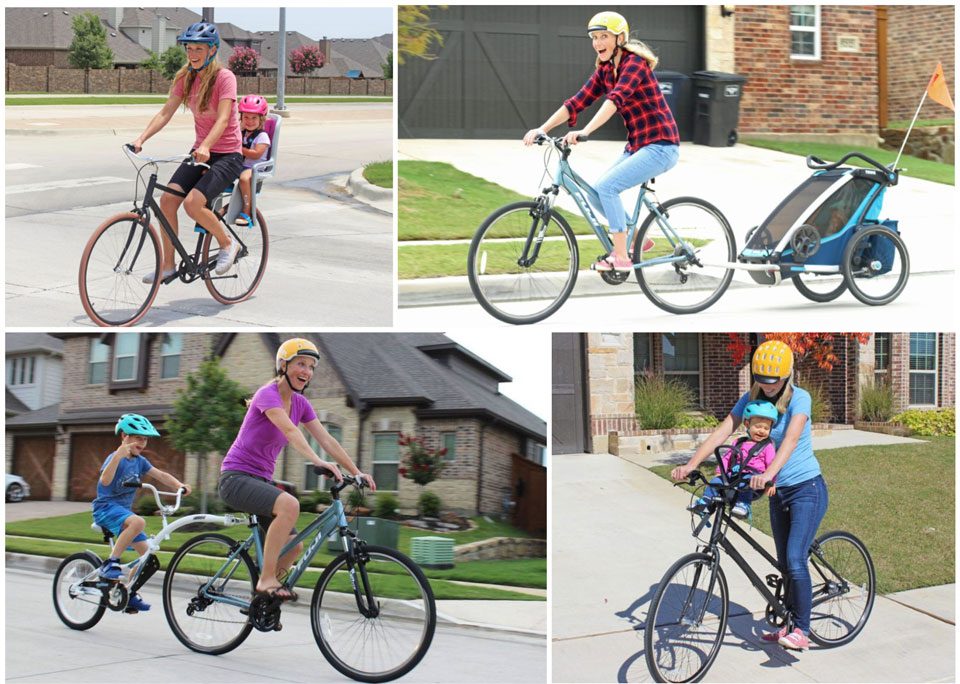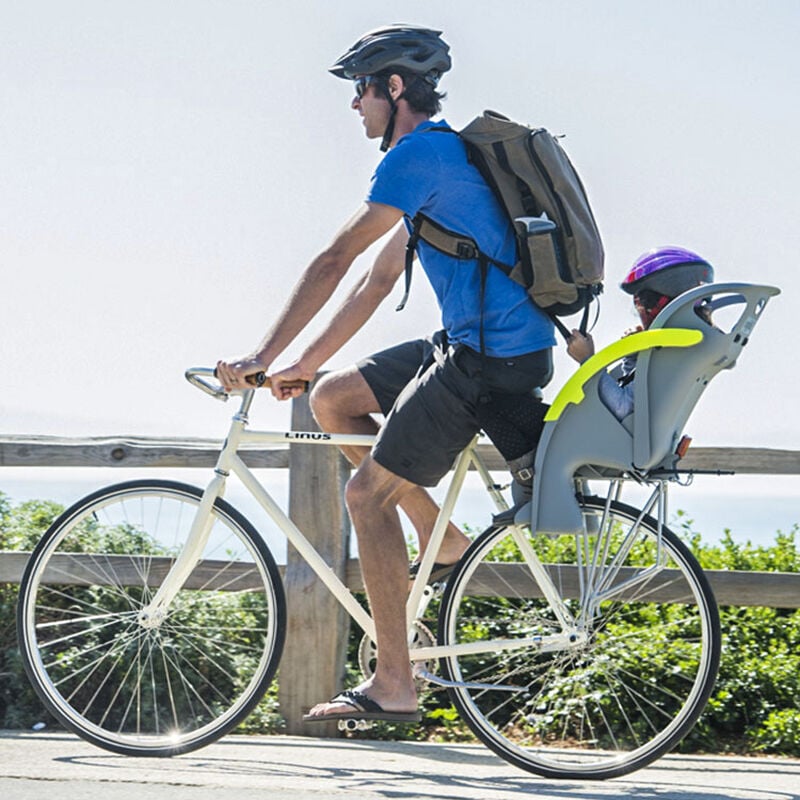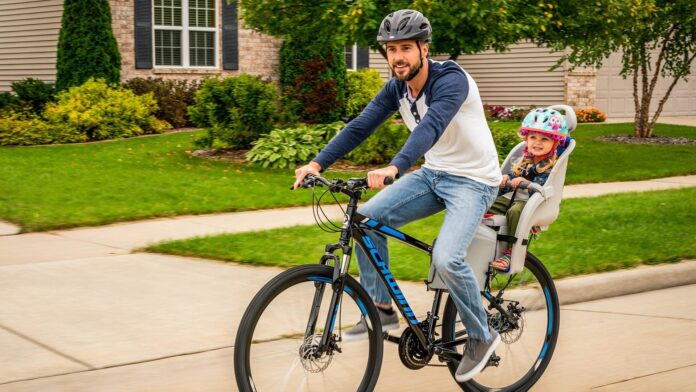Discover a range of top-rated bike kid carriers in Austin, Texas, from brands such as Thule, Burley, and Schwinn. Shop Water Resistant Rain Covers, Child Bike Seats, and Trailers for safe and enjoyable family biking experiences.
Explore competitive prices and discounts for your next cycling adventure with your little one.
Types Of Bike Kid Carriers
When it comes to choosing a bike kid carrier, there are several options to consider. The type of carrier that will work best for you and your child depends on various factors such as the child’s age, weight, and your personal preferences. Below, we’ll explore the different types of bike kid carriers available in the market.
Front-mounted Child Bike Seats
Front-mounted child bike seats are designed to be attached to the front of the bicycle, allowing the child to sit in front of the rider. These seats are suitable for younger children and provide a close bonding experience between the child and the rider. They often come with adjustable harness systems and footrests for comfort and safety.
Rear-mounted Child Bike Seats
Rear-mounted child bike seats are installed at the back of the bicycle, offering a secure and stable seating position for the child. These seats are ideal for older children who can sit independently. They come with ergonomic designs and safety features to ensure a smooth and enjoyable ride for both the child and the rider.
Bike Trailers
Bike trailers are standalone units attached to the rear of the bicycle, providing a spacious and enclosed compartment for the child to sit comfortably. These trailers are suitable for longer rides and can accommodate one or more children, along with additional storage space for essentials. They offer excellent stability and safety features, making them a popular choice for families.
Considering Safety Features
Bike Kid Carriers offer a convenient way to bring your child along on cycling adventures while ensuring their safety. When choosing a carrier, it’s essential to prioritize safety features to protect your little one on the road.
Harness Systems
The harness system in a Bike Kid Carrier plays a crucial role in securing your child during rides. Look for carriers that feature adjustable and padded five-point harness systems to provide optimal comfort and security for your child.
Impact Resistance
Opt for Bike Kid Carriers constructed with durable and impact-resistant materials to offer maximum protection in the event of accidents or collisions. Ensure that the carrier meets safety standards for impact resistance to safeguard your child on every ride.
Age And Weight Considerations
Age and weight considerations are important when choosing a bike kid carrier. Ensure that the carrier is suitable for your child’s age and weight to ensure their safety and comfort during rides.
Considering the age and weight of your child is crucial when selecting a bike kid carrier. Safety and comfort are of utmost importance when embarking on biking adventures with your little one. In this section, we will explore the age guidelines and weight limits to ensure you make an informed decision.Age Guidelines
When it comes to age, bike kid carriers are designed to accommodate children of different age groups. It is essential to follow the manufacturer’s recommendations to ensure your child’s safety and comfort. Most bike kid carriers have a minimum age requirement of 9 months, as this is typically when a child can sit up independently. However, specific carriers may have different guidelines based on their design and features.Weight Limits
Weight limits are another important consideration when selecting a bike kid carrier. Manufacturers provide specific weight limits to ensure the carrier can support the child’s weight securely. Typically, the weight limit for bike kid carriers ranges from 30 to 50 pounds. Ensure you check the product specifications to determine the maximum weight capacity of the carrier you are considering. It is crucial to keep in mind that weight limits may vary depending on the carrier’s design and construction. Some carriers can handle higher weights due to their sturdy frames and suspension systems. However, exceeding the weight limit can compromise the carrier’s stability and safety, so it’s important to adhere to the specified limits. Overall, considering the age and weight of your child is essential when choosing a bike kid carrier. Adhering to the recommended guidelines ensures your child’s safety and allows for a comfortable and enjoyable biking experience together. Remember to carefully read the product descriptions and specifications provided by the manufacturer to ensure you are selecting a carrier that is suitable for your child’s age and weight. By doing so, you can confidently embark on bike adventures while keeping your child safe and secure.
Credit: www.amazon.com
Key Features To Look For
If you’re in the market for a bike kid carrier, knowing the key features to look for can help you make an informed decision. From adjustability to storage options, these features can greatly impact the convenience and comfort of your biking experience with your child. Let’s explore the essential features that can make a bike kid carrier a valuable investment.
Adjustability
One of the most crucial features to consider in a bike kid carrier is its adjustability. The ability to adjust the carrier ensures a comfortable fit for your child, allowing them to maintain a proper posture during the ride. Look for carriers with adjustable harness straps and footrests to accommodate the growth of your child. Additionally, an adjustable recline feature can provide optimal support for your child’s head and neck, especially during longer rides.
Storage Options
Storage options are another essential aspect to consider when selecting a bike kid carrier. Look for carriers equipped with convenient storage compartments for holding essentials such as snacks, toys, or a diaper bag. Integrated pockets or detachable storage bags can keep your child’s items organized and easily accessible, allowing you to focus on the ride without worrying about the practicalities of carrying extra items.
Popular Brands And Models
Thule
Thule RideAlong Lite Bike Seat for Kids $179.95
- Pottery Barn Kids – $229.95
- Dedham Bike – $229.00
- Competitive Cyclist – $229.00
Burley
- REI – $379.95
- Ray’s Bike Shop – $379.95
- Incycle Bicycles – $299.99
Schwinn
- Target – $169.92
- Amazon.com – $149.99

Credit: www.twowheelingtots.com
Tips For Testing And Installation
When it comes to testing and installation of a bike kid carrier, it is important to follow these tips to ensure a successful setup. Avoid overused phrases, keep sentences brief, and use a variety of expressions to engage the reader.
Choose a water-resistant cover or cold weather cover for added protection during rides.
When it comes to testing and installing a bike kid carrier, it’s crucial to ensure its safety and stability. Proper installation and thorough in-store testing are essential steps to guarantee a secure and comfortable ride for your child. Following these tips will help you select the right carrier and install it correctly.In-store Testing
Before making a purchase, it is crucial to test the carrier in-store to check for its compatibility with your bike and the comfort it provides. Here are some tips for in-store testing: – Ensure the carrier fits securely on your bike without wobbling. – Test the weight distribution by adding weight to the carrier as if your child were in it. – Check the padding and harness system for comfort and security.Proper Installation
Proper installation of the bike kid carrier is essential for safety. Follow these tips for ensuring a secure installation: 1. Read the manufacturer’s instructions carefully, and double-check any specific requirements for your bike model. 2. Test the carrier on a short, slow ride before going on longer trips to ensure stability. 3. Inspect the carrier regularly for any loose parts or signs of wear and tear, and make adjustments as needed. By following these tips for in-store testing and proper installation, you can ensure a safe and enjoyable riding experience for both you and your child.
Credit: www.copilotgear.com
Frequently Asked Questions
What Age Can A Baby Go In A Bike Carrier?
A baby can go in a bike carrier around 9-12 months once their neck muscles are strong enough.
Can A 4 Year Old Go In A Bike Seat?
Yes, a 4-year-old can ride in a bike seat, as long as they meet the weight and height requirements.
What Age Can Babies Go In Bike Seats?
Babies can go in bike seats when they can support their head and sit up unassisted, typically around 9-12 months old.
What Is The Safest Way To Carry A Child On A Bike?
The safest way to carry a child on a bike is to use a child bike seat or a bike trailer. Make sure the seat or trailer is properly installed and secured, and always use safety straps and helmets for both the child and the rider.
Conclusion
Searching for the perfect bike kid carrier can be overwhelming, but with this guide, you can easily find the ideal one for your needs. Whether you prefer trailers, front-mounted seats, or backpack styles, safety and comfort are top priorities for your little one’s biking adventures.
Explore and enjoy the ride!




